Retail Outlook: Festive 2024
When it comes to winning in retail, there is no more lucrative opportunity than the Festive Season.
Consumers are more eager to spend during the festive period; it is the biggest annual spending event of the year, and is expected to increase 4.% in the US alone to $1.3tn (Statistica, 2023).
Yet this also leads to a more discerning shopper. Both consciously and unconsciously, consumers expect on-trend campaigns that connect with their needs, desires and interests.
This report looks at the trends in the Christmas and Holiday retail market and at which brands are standing out from the crowd to consumers. Featuring case studies and activations for 2023 across sectors including FMCG, luxury, beauty and Alc Bev, this report looks at retail point-of-sale messaging, activation and delivery.
Combining last year Festive Season with evergreen themes from the first 6 months of 2024, this report aims to support brands with steers and insights on how to win during the future festive period.
Key Trend 1: Childhood Nostalgia
Nostalgia is nothing new in brand communications, as challenging social economic
environments trigger consumers to re-immerse themselves in fond and positive emotions of the
past. This is heightened during the holiday's, often seen as a moment of escapism, and time away from responsibilities and the ‘real world’.

Nostalgia is nothing new in brand communications, as challenging social economic environments trigger consumers to re-immerse themselves in fond and positive emotions of the
past. This is heightened during the holiday's, often seen as a moment of escapism, and time away from responsibilities and the ‘real world’.
In 2023, childhood nostalgia was the focus of many festive campaigns, through much-loved characters, family traditions and sensory memories. Many brands chose to utilise characters to bring childhood memories back to life - creating experiences and interactivity around these emotional triggers.
Jo Malone combined universal festive characters with annual family traditions through a baking-inspired Gingerbread house at their Battersea Power Station pop up, complete with XL Gingerbread men. Lego embraced festive treats and characters with an in-store Santa's Grotto.
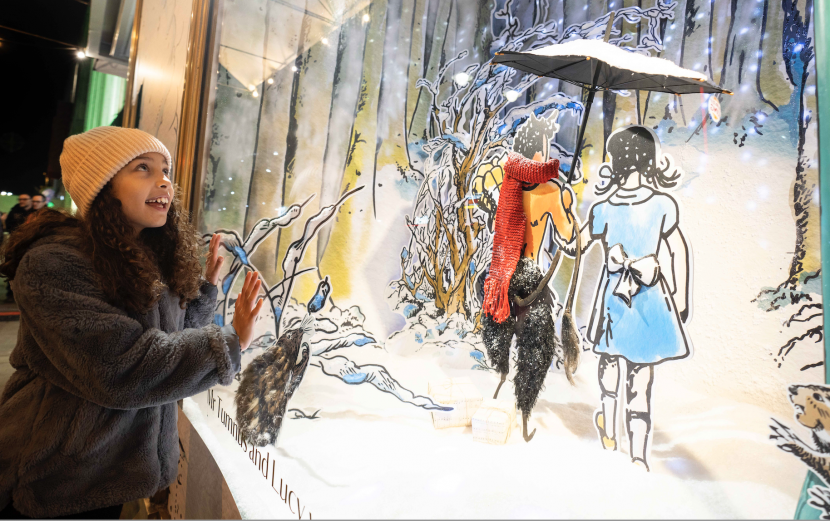
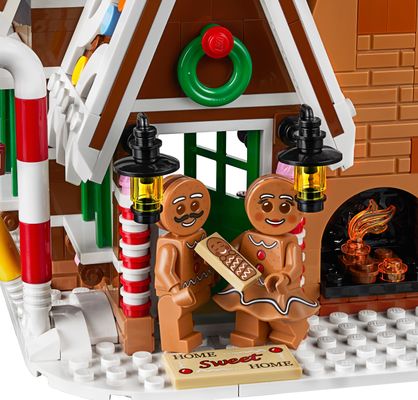
Fenwick took inspiration from the beloved Narnia stories whilst Barbour partnered with Aardman’s Shaun the Sheep – leveraging characters from across generations to capture the emotions of all consumers of all ages.
Vodafone took this concept and created their own character to connect with all audiences. Their hero elf toy was brought to life across television adverts, window displays and in-store campaigns.
Key Trend 2: Iconic Retro
Brands often leverage iconic pop culture symbols to tap into the positive associations that consumers already have with these familiar elements, effectively piggybacking on an existing open mindset.

For example, Sezane placed a retro Mini Cooper adorned with Christmas decorations in the heart of Covent Garden to boost brand awareness, while Rimmel featured the beloved Christmas film Love Actually in their in store displays.
Similarly, Nutella incorporated the iconic Fair Isle Christmas jumper pattern into its holiday packaging, and Lush used the famous Star Wars font for their "out of this world" in-store signage.
By using imagery and references that consumers are already connected to, brands can
more easily create memorable and impactful Festive Season campaigns
Key trend 3: Out of this World
In 2023, celestial and other-worldly themes were key design elements. Liberty’s oversized star and globe decorations in London, along with Cartier’s Air Balloon, both explored the stars and sky. Meanwhile, Chanel’s wonderland and Dior’s "Carousel of Dreams" at Saks Fifth Avenue in New York transported consumers to new and imaginative worlds.
Crucially, what links these together is an out-of-this-world experience that remains within realism. It only teeters on the side of fantasy, with a focus on outerspace and the subjective and accessible fantasy of our imagination ‘wonderlands’. Consumers want moments of escapism at Christmas, but it needs to feel accessible.
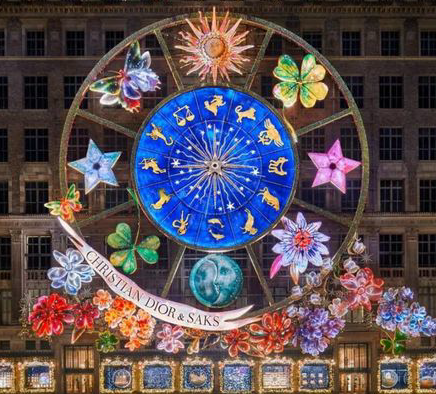
33% of consumers are keen to experience accessible escapism” in their retail experiences. - Squire Pattern, 2022
We have seen the usage of magical elements of real life, such as the night sky, incorporated with elements of the fantastical to create stunning and captivating campaigns. This is where digitisation in retail can be effective to merge the two worlds of fantasy and realism.
Key Trend 4: Community
Despite the nature of the Holiday Season as a materialistic event, campaigns that ‘give back’ continue to take centre stage. The focus for 2023 actively engaged customers in giving behaviours, rather than
just focusing on the monetary benefit of their spend.

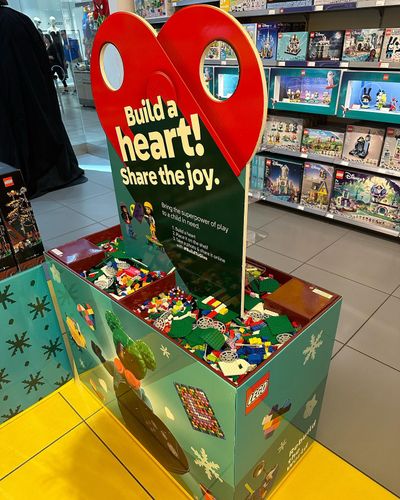
Lego’s ‘Build to Give’ campaign encouraged visitors to their stores to support children who wouldn’t be as fortunate this Christmas through creating and then sharing a snap of their own heart of Lego. For every picture shared, they donated a box of Lego to a child in need of play during the holiday season. Cadbury ran their Secret Santa giving campaign for another successful year, encouraging
'9 in 10 people are more likely to purchase from a brand they feel helps their community' - Ad Week 2023
In supermarkets, monetary value donations remain logistically the most efficient way to activate, yet brands are becoming more creative with ways to encourage consumers to do this.
Waitrose and Morrison’s brought donating to life through ‘Giving Trees’, where consumers could add a festive POS token tree decoration from the tree to their cart like any other item, to generate active engagement. Asda’s festive post boxes encouraged shoppers to write letters to those suffering from loneliness during the holidays, whilst Lidl’s toy donation scheme supported charity Neighbourly in local communities.
Key Trend 5: Pop Ups
Pop ups and interactive activations are leading the way in the retail market year-round, as brands fight to create new and relevant experiences. Christmas is a key moment for this kind of activation.
Known for creating stand out pop-ups at all times of year, Anya Hindmarch's Grotto pop-up took over a London Belgravia shop for the festive period.
In New York, Charlotte Tilbury created a pop-up serving free hot chocolate and offering spin to win prizes, that proved so popular that queue wait times exceeded 2 hours.
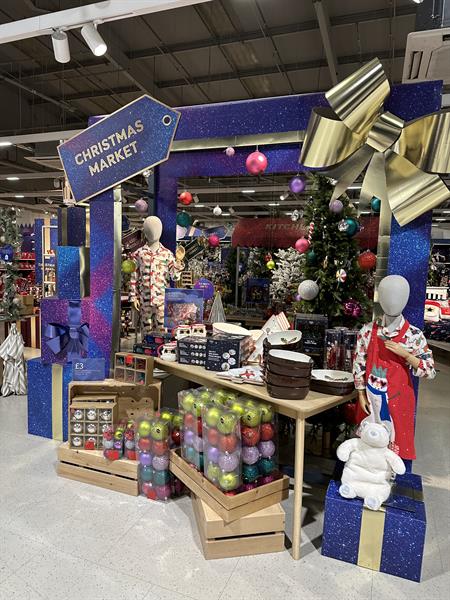
Pop-ups are also prevalent in-store: M&S set up their in-store ‘Christmas Market’, whilst Nestle in Brazil created a ‘Chocolatory’ to share their festive Kit Kat range.
Quality Street's pop-up appeared in selected John Lewis stores, showing that activations that allow consumers to customise their experience or product are particularly effective at Christmas time.
Similarly, in beauty, Dior's pop up in beauty halls in Vancouver and Indonesia offered product engraving.
Key Trend 6: Digital
Digitization in retail continues to thrive, particularly during the Holiday Season and in festive pop-ups, thanks to its adaptability and sustainability. Brands excelled in both online seasonal experiences—like Bloomingdale’s virtual Wonka Land and Cadbury India’s personalized Christmas e-cards—and in physical stores.
Flannels featured continuously changing screens in their window displays, while Tesco’s pop-up at King’s Cross station showcased a screen that gradually became more festive, eventually spilling its display into the station itself.


Read more from our Insights team

